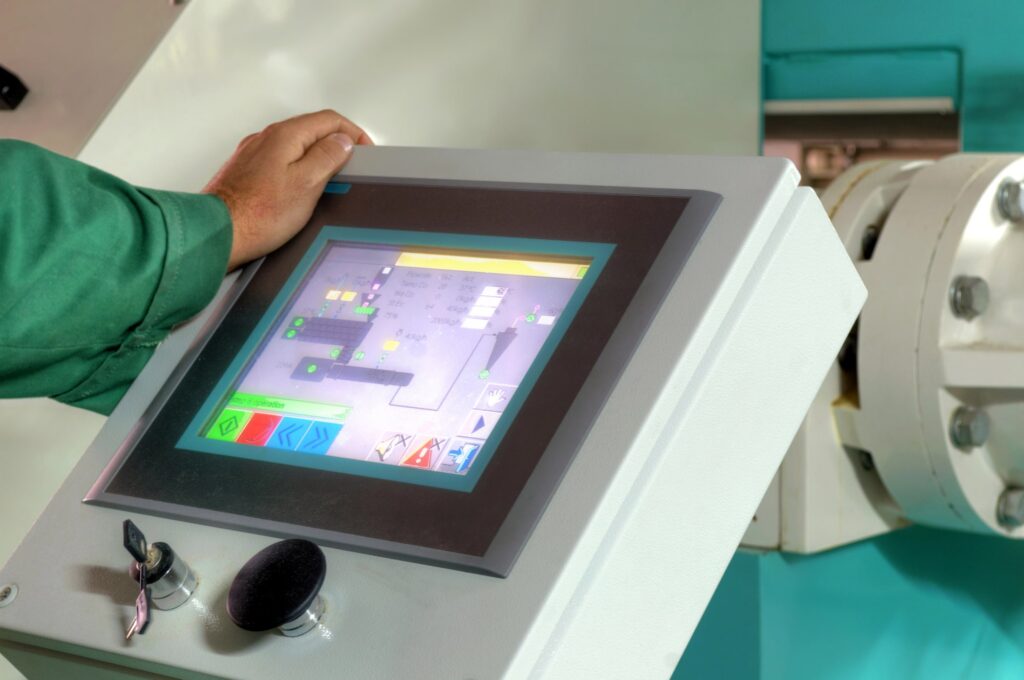
Industrial touch screens are the unsung heroes of the factory floor, control rooms, and various human-machine interface (HMI) applications. Unlike their consumer counterparts, these specialized displays are built to endure the rigors of harsh environments. And yet, even these toughened interfaces can be susceptible to malfunctions.
Let’s explore common industrial touch screen defects, calibration woes, and the best practices to keep your touch screens operational.
Understanding Industrial Touch Screens
Industrial touch screens differ significantly from the touch screens found on smartphones and tablets. Industrial touch screens prioritize durability over sleek aesthetics. They are encased in heavy-duty enclosures, often with an IP rating that signifies their resistance to dust and liquids.
In addition, industrial touch screens employ thicker, more robust touch panels that can withstand repeated touches, accidental bumps, and vibrations.
Rugged Resilience: Key Features of Industrial Touch Screens
Industrial touch screens boast several features that enhance their longevity:
- Resistive Touch Technology: This prevalent technology relies on pressure to register a touch, making it resistant to scratches, dust, and even liquids.
- Anti-glare Coatings: Glare from sunlight or artificial lights can hinder screen visibility in industrial settings. Anti-glare coatings effectively address this issue.
- Wider Operating Temperatures: Industrial touch screens function optimally in a broader temperature range compared to consumer models, ensuring reliable operation in extreme environments.
Common Industrial Touch Screen Defects
Despite all of these features, industrial touch screens are not invincible. Here are some common defects that can plague these essential interfaces:
- Shattered Screens: Physical damage is the most obvious and concerning defect. Impacts, forceful touches, or flying debris can crack the touch panel, rendering the screen unresponsive or causing erratic behavior.
- Drifting Touches: Drifting touches occur when the touch registration deviates from the actual touch location. This can significantly hamper data input and lead to operational errors.
- Ghost Touches: Ghost touches happen when the screen registers a touch even though there’s no physical contact. This can trigger unintended actions and disrupt workflows.
Calibration Catastrophe: Restoring Precision to Your Touch Screen
Calibration ensures the touch screen accurately translates physical touches into corresponding on-screen actions. Calibration issues can manifest in several ways: inaccurate cursor movement, difficulty selecting specific on-screen elements, and unintended button presses are all signs of a calibration gone wrong.
The Calibration Process
Calibration typically involves a built-in software utility or dedicated buttons on the touch screen itself. The process usually involves touching specific targets displayed on the screen in a precise sequence. Always consult the user manual for your specific touch screen model for detailed calibration instructions.
Safeguarding Your Investment: Tips for Preventing Touch Screen Damage
Industrial touch screens are a significant investment, and proper care goes a long way in ensuring their longevity. Here are some practical tips to keep your touch screens in top condition:
- Environmental Considerations: Temperature and Dust Control: Try to maintain a clean and temperature-controlled environment around the touch screen. Excessive heat or dust can degrade the touch panel’s sensitivity and functionality. Invest in air filtration systems to minimize dust buildup, and adhere to the recommended operating temperature range for your specific touch screen model.
- Proper Handling Techniques for Operators: Train operators on proper touch screen handling techniques. This includes using styluses for extended touch interactions, avoiding forceful touches, and keeping the screen clear of liquids and debris. Additionally, consider implementing screen cleaning protocols using appropriate cleaning solutions to remove dust and fingerprints without damaging the anti-glare coating.
Let ACS Industrial Help with All Your Touch Screen Repair Needs
With over 20 years of experience, ACS Industrial is a leading industrial electronics repair service provider. We repair touch screens across various makes and models. We provide a rapid turnaround time. Most repairs are back in your hands within 7-15 days, with our Rush Repair Service typically shipping in just 3-5 days.
Need Industrial Touch Screen repair and service? ACS can help. Learn more at our Industrial Touch Screen Repair Service page.
When you choose us, you can expect real people, honest work, and accurate results. We showcase the dirty, gritty work + magic that gets electronics back up and running. Contact us for a FREE evaluation and a no-obligation quote, or call (800) 605-6419.
